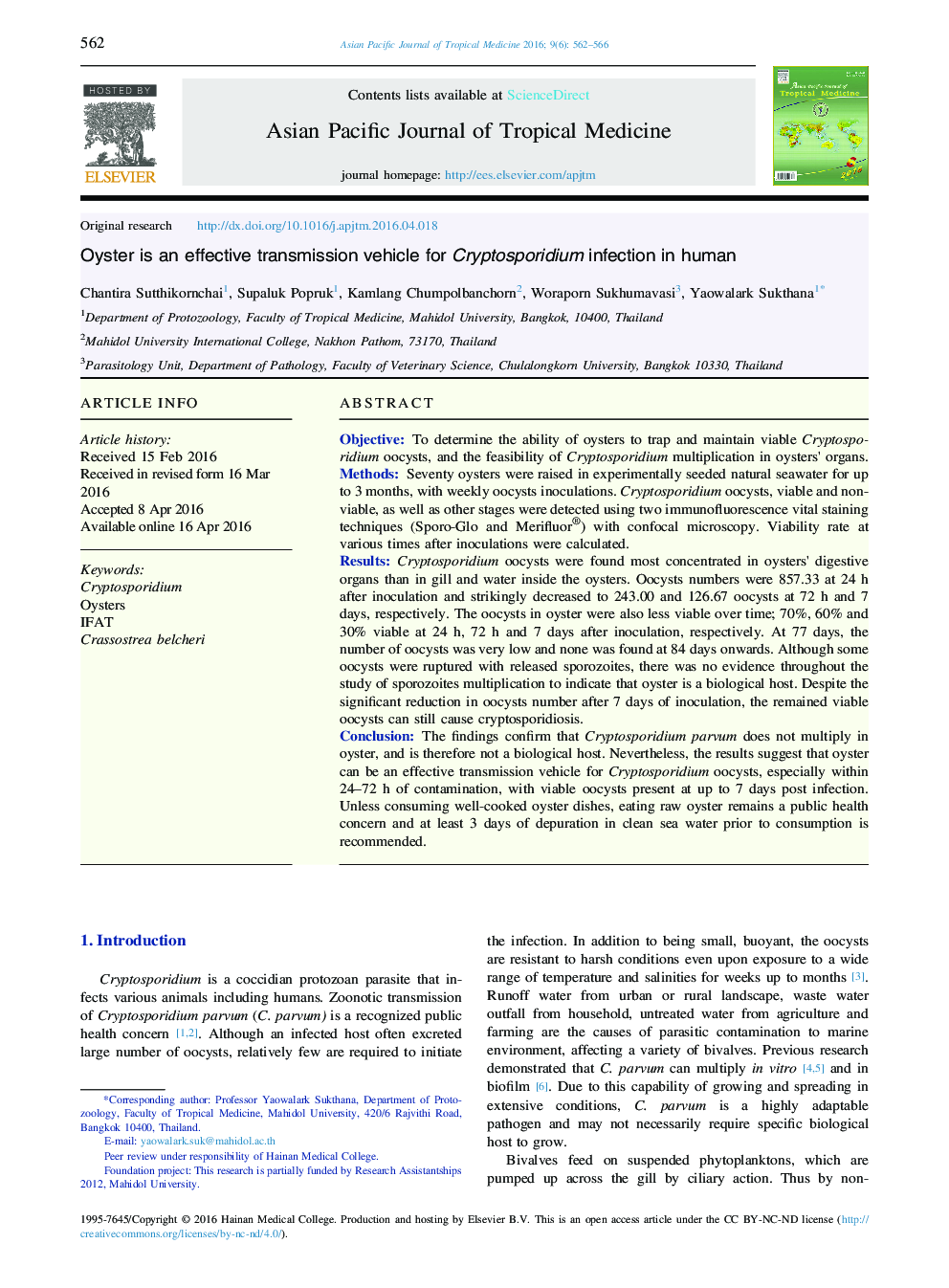| کد مقاله | کد نشریه | سال انتشار | مقاله انگلیسی | نسخه تمام متن |
|---|---|---|---|---|
| 3455164 | 1596003 | 2016 | 5 صفحه PDF | دانلود رایگان |

ObjectiveTo determine the ability of oysters to trap and maintain viable Cryptosporidium oocysts, and the feasibility of Cryptosporidium multiplication in oysters' organs.MethodsSeventy oysters were raised in experimentally seeded natural seawater for up to 3 months, with weekly oocysts inoculations. Cryptosporidium oocysts, viable and non-viable, as well as other stages were detected using two immunofluorescence vital staining techniques (Sporo-Glo and Merifluor®) with confocal microscopy. Viability rate at various times after inoculations were calculated.ResultsCryptosporidium oocysts were found most concentrated in oysters' digestive organs than in gill and water inside the oysters. Oocysts numbers were 857.33 at 24 h after inoculation and strikingly decreased to 243.00 and 126.67 oocysts at 72 h and 7 days, respectively. The oocysts in oyster were also less viable over time; 70%, 60% and 30% viable at 24 h, 72 h and 7 days after inoculation, respectively. At 77 days, the number of oocysts was very low and none was found at 84 days onwards. Although some oocysts were ruptured with released sporozoites, there was no evidence throughout the study of sporozoites multiplication to indicate that oyster is a biological host. Despite the significant reduction in oocysts number after 7 days of inoculation, the remained viable oocysts can still cause cryptosporidiosis.ConclusionThe findings confirm that Cryptosporidium parvum does not multiply in oyster, and is therefore not a biological host. Nevertheless, the results suggest that oyster can be an effective transmission vehicle for Cryptosporidium oocysts, especially within 24–72 h of contamination, with viable oocysts present at up to 7 days post infection. Unless consuming well-cooked oyster dishes, eating raw oyster remains a public health concern and at least 3 days of depuration in clean sea water prior to consumption is recommended.
Journal: Asian Pacific Journal of Tropical Medicine - Volume 9, Issue 6, June 2016, Pages 562–566